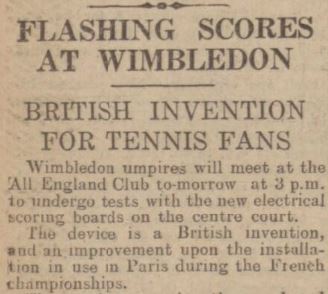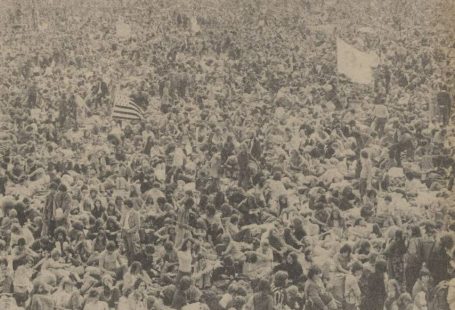If you’ve got an agricultural labourer in your family tree, chances are you’ll have an ancestor who practiced straw plaiting. Straw plaiting was a cottage industry that saw its heyday in eighteenth and nineteenth century rural Britain, and was in the main part practiced by women and children. In this special blog, using articles and pictures from The Archive, we’ll take a look at the history of this discipline, from its heyday to its eventual decline.
An article in the Bedfordshire Times & Independent, 8 January 1862, gives its account of how straw plaiting gained popularity in Britain. It attributes its introduction to none other than Mary Queen of Scots, who whilst travelling in Lorraine, noticed women and children ‘employed in the plaiting and making of straw hats, and in the districts where this light and pleasant handicraft was practised, the peasantry were much better off.’
‘A Luton lass plaiting straw’ | Penny Illustrated Paper | 29 August 1885
By 1724 straw plaiting had gained a footfall in Britain, becoming particularly popular in Bedfordshire and Hertfordshire. The plaited straw was mainly used in the construction of hats and bonnets. At this time, however, the process for constructing the plaits was far from ideal, because ‘the contrivances for the splitting of straw were of a clumsy character.’
This changed, according to the same article in the Bedfordshire Times & Independent, when two French prisoners at Yoxley Barracks, near Stilton, made the first straw-splitter sometime between 1803 and 1806, at the height of the Napoleonic wars.
This innovation heralded the golden age of straw plaiting. At the 1851 Great Exhibition ‘the skill of the straw plaiter was fully shown.’ But at the time of great industrial change, straw plaiting was still purely domestic in character, ‘carried on the in the cottages of agricultural labourers of the three counties of Bedfordshire, Hertfordshire, and Buckinghamshire, and portions of Essex and Suffolk. The plaiters are generally the wives and children of the labourers: a few are men.’
Straw Plaiting Exhibition | Illustrated Sporting & Dramatic News | 1 October 1881
According to the Bedfordshire Times & Independent, unmarried women, ‘who are skilful and quick, earn the most, but some married women contrive to do as well.’ The newspaper estimates that the number of women and young boys (under the age of eight) engaged in plaiting to be around 50,000. This workforce was reputed to be able to produce 200 million yards of plaits a year, which were then shipped to Canada, Australia, the West Indies, India, Brazil and Europe.
Straw Plaiting Exhibition | Illustrated Sporting & Dramatic News | 1 October 1881
However, this prosperity was not to last. Mechanisation, as well as cheaper supplies from abroad, meant that by the 1890s many straw-plaiters, according to Pearson’s Weekly, were settling with ‘starvation wages:’
The truth of the matter is that in these days of agricultural depression the women and children will gladly wear out their lives to earn some two or three shillings a week to eke out their husband’s or their father’s slender income; perhaps to pay the cottage rent. It is better to plait than to do nothing, to earn a few shillings than to starve, to bend to the sweater’s yoke than to plead for admission at the workhouse gates.
In 1895 politician Viscount Peel visited a female straw-plaiter, whose toil prompted him to exclaim: ‘that seemed a hard lot to labour, to work, for such a pittance…and to work so hard.’
Indeed, the physical practice of straw-plaiting sounds rather unpleasant, and appears, most alarmingly to risk tooth-loss:
That the trade is disagreeable no one can gainsway. The continual passing of the straw through the mouth scratches the lips, and leaves a nasty taste in the palate. Moreover the action of the sulphur fumes with which the straws are cleansed, and the friction of the sharp-edged straw on the enamel of the teeth, hasten decay. Few straw-plaiters have sound front teeth, except of course the little children, and in the case of adults they are usually worn right away.
So whilst by the early twentieth century straw plaiting had faded into a bygone rural age, in the 1970s it was enjoying something of a resurgence. In 1973 the Belfast Telegraph features one David J Patterson, of Clontnacally, Carryduff, ‘who still makes plaits for wall decorations, lovers’ knots and buttonhole badges.’
Belfast Telegraph | 29 January 1973
Another passionate advocate of modern straw-plaiting was Miss Joyce Powell, of Kenilworth. She believed that the straw plaiting revival had been ‘sparked off by WI members, who had been taught the craft by old men in their villages.’
In the same article, featured in the Coventry Evening Telegraph’s women’s magazine, reporter Susan Brett notes how: ‘Straw plaiting can be turned to good effect in decorating the modern home, because of the infinite variations of design possible. Bows, flowers, circles, loops and triangles are all shapes which fit in with the modern house or farmstead.’
Coventry Evening Telegraph | 28 October 1971
Once a mainstay of rural life, a necessary supplement to income, straw-plaiting risked totally fading away, forgotten. However, it is fascinating to discover its resurgence through the pages of the British Newspaper Archive, and hopefully this 1970s passion for plaiting has endured to the present day.










